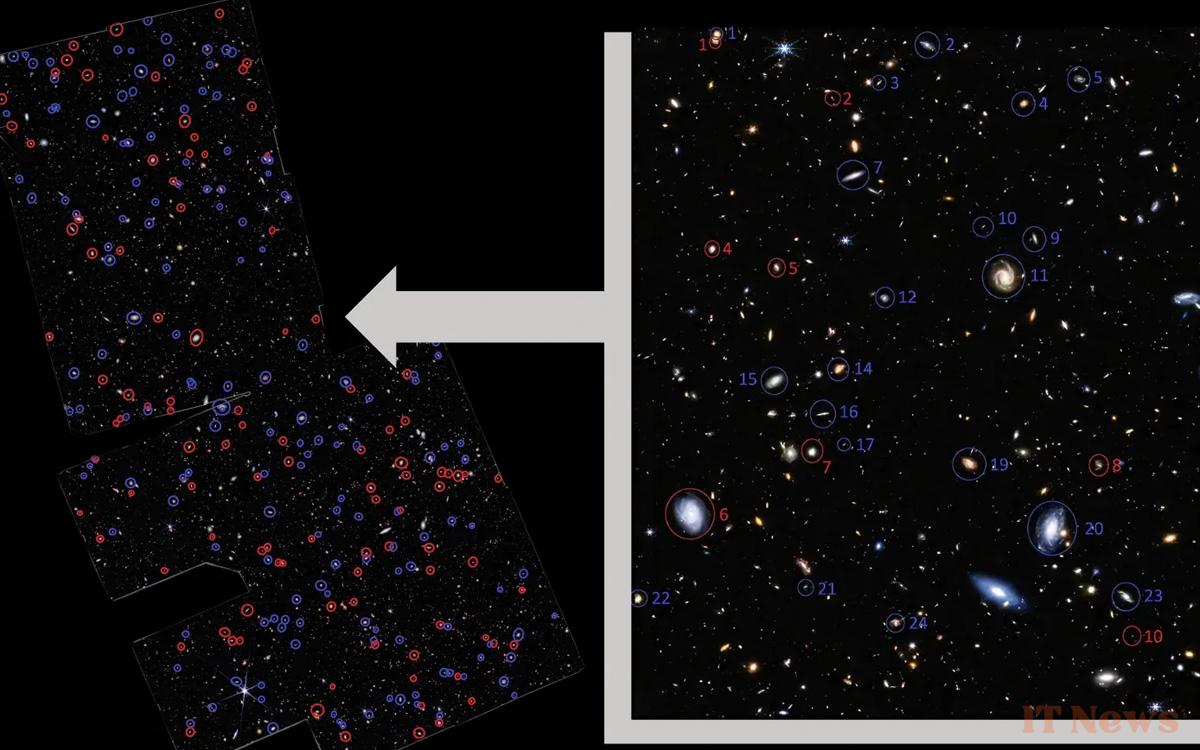The JWST space telescope has just discovered, to the amazement of NASA, that galaxies tend to adopt the same direction of rotation. This has scientists puzzled, as they can currently only explain the phenomenon with a rather astonishing theory.
For the first time, astronomers have just observed something Very strange. Even stranger, probably, than the acceleration of the expansion of the universe. The JWST, the most powerful space telescope in operation, allows NASA to observe that two-thirds of galaxies have the same direction of rotation. Compared to one-third that rotate in the opposite direction.
Given the scale and the theory of large numbers, scientists were rather expecting a random distribution of the direction of rotation, tending towards 50% of galaxies rotating in the same direction. Enough to lose one's Latin! Because one of the most plausible explanations for This stage is no less dizzying: “the universe [would] have been born rotating. This explanation is consistent with theories such as black hole cosmology, which postulates that the entire universe is the interior of a black hole”, explains Carl R. Ice, one of the authors of the discovery.
What if black holes hid... other universes?
This idea is indeed not new. But it implies a reading grid profoundly different from the observations of the universe made until now. It was in 1972 that the theoretical physicist Raj Kumar Pathria and the mathematician Irving Good proposed this idea. While detailing the implications of this scenario with a "cosmological model of the black hole" also called "Schwarzschild cosmology".
If we imagine the universe plunged into a black hole, rather than born from a huge explosion, the model assumes that the Hubble volume of the observable universe is equal to the Schwarzschild radius. If this is not very clear (we forgive you...) you should know that the Hubble volume designates, from our point of observation, the sphere which marks the boundary of the observable universe.
Limit beyond which all observation escapes us - due to the expansion of the Universe, which causes objects to move away from us at a speed greater than that of light past this horizon. The Schwarzschild radius, on the other hand, is a notion specific to the mathematical conceptualization of black holes. It is this radius that defines the circumference of the event horizon – beyond which nothing can escape.
Again, it is impossible to observe what lies beyond the event horizon of a black hole, because of the intense gravity which prevents even photons from escaping the grip of these supermassive objects. However, there is indeed a correspondence between the Hubble volume and the Schwartzschild radius. A correspondence that has until now been relegated to a simple coincidence.
But which today gives substance to the theory according to which our universe exists in an immense black hole. Among the most notable implications of this cosmology, the black holes in our universe could give access to other "mini universes". In addition, this theory could better explain the expansion of the universe than the Big Bang theory. To learn more about this fascinating discovery, we invite you to view the researchers' publication by clicking here.




0 Comments